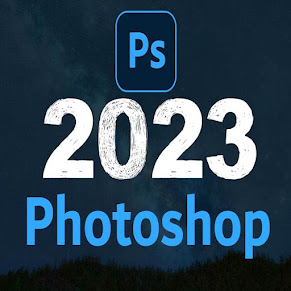How many versions 1990 photoshop to Present
Adobe Photoshop has a rich history, with continuous development and numerous updates from its initial release in 1990 to the present year of 2023. Here is a detailed overview of the evolution of Photoshop from 1990 to 2023:
1. Photoshop 1.0 (1990): The first version of Photoshop was released exclusively for Macintosh computers. It provided essential tools for image editing, including cropping, resizing, and color correction.
2. Photoshop 2.0 (1991): This version introduced significant advancements, including the introduction of layers. Layers revolutionized the way images were edited by allowing users to work on different elements independently, providing greater flexibility and control.
3. Photoshop 2.5 (1992): With this release, Adobe expanded Photoshop's capabilities by introducing support for the Windows platform. It allowed a wider user base to access and benefit from Photoshop's powerful editing features.
4. Photoshop 3.0 (1994): Version 3.0 brought new features like adjustment layers, which enabled non-destructive editing by applying adjustments separately from the image itself. This allowed users to modify adjustments later without affecting the original image data.
5. Photoshop 4.0 (1996): This version introduced a range of new tools, including the Healing Brush, which allowed users to seamlessly remove imperfections from images. It also introduced the History Palette, which enabled users to undo and redo multiple editing steps.
6. Photoshop 5.0 (1998): Version 5.0 brought significant improvements to text editing capabilities, including editable text layers and the ability to apply layer styles to text. This expanded Photoshop's capabilities for graphic design and typography.
7. Photoshop 5.5 (1999): This release primarily focused on web design, with added features like the Save for Web option, which optimized images for web usage. It also introduced the Slice tool, making it easier to create and export web graphics.
8. Photoshop 6.0 (2000): Version 6.0 introduced vector shape layers, which allowed users to create and edit scalable vector shapes within Photoshop. It also included the Liquify filter, enabling users to manipulate and distort images in a fluid and controlled manner.
9. Photoshop 7.0 (2002): This version introduced several improvements to the user interface, making it more customizable and user-friendly. It also brought new painting tools, such as the Healing Brush and the ability to paint custom brush strokes.
10. Photoshop CS (8.0) (2003): With the introduction of the Creative Suite (CS) branding, Photoshop CS provided tighter integration with other Adobe applications. It introduced the File Browser for better file management and enhanced workflow capabilities.
11. Photoshop CS2 (9.0) (2005): Version CS2 brought advanced features like Vanishing Point, which simplified the process of working with perspective in images. It also introduced Smart Objects, allowing non-destructive editing of embedded objects.
12. Photoshop CS3 (10.0) (2007): This release introduced significant performance improvements, including the introduction of a faster rendering engine. It also brought new features such as the Quick Selection tool and improved integration with other Adobe applications.
13. Photoshop CS4 (11.0) (2008): Version CS4 introduced a redesigned user interface with a more intuitive layout. It also introduced features like Content-Aware Scaling and the Adjustment Panel, enhancing productivity and creative possibilities.
14. Photoshop CS5 (12.0) (2010): This version introduced the powerful Content-Aware Fill feature, which allowed users to remove unwanted elements from images seamlessly. It also introduced the enhanced painting tools and the Puppet Warp feature.
15. Photoshop CS6 (13.0) (2012): Version CS6 brought several new features, including the Content
-Aware Move tool, which enabled users to move objects within an image while intelligently filling in the gaps. It also introduced the redesigned Crop tool and improved 3D capabilities.
16. Photoshop CC (14.0) (2013): With the launch of the Creative Cloud subscription model, Photoshop transitioned to a regularly updated software. It provided users with access to the latest features and updates through a subscription plan.
17. Photoshop CC 2014 (15.0) to Photoshop CC 2023 (24.0): Since the Creative Cloud release, Adobe has continued to release regular updates and new features. These updates have brought advancements in areas such as content-aware tools, advanced selection and masking techniques, improved performance, enhanced 3D capabilities, cloud document collaboration, and more.
Throughout its evolution, Photoshop has established itself as the industry-standard software for image editing and graphic design. Its constant innovation and continuous improvements have made it an indispensable tool for professional photographers, designers, artists, and creatives worldwide.


How can u evaluate it was so interesting
ReplyDelete